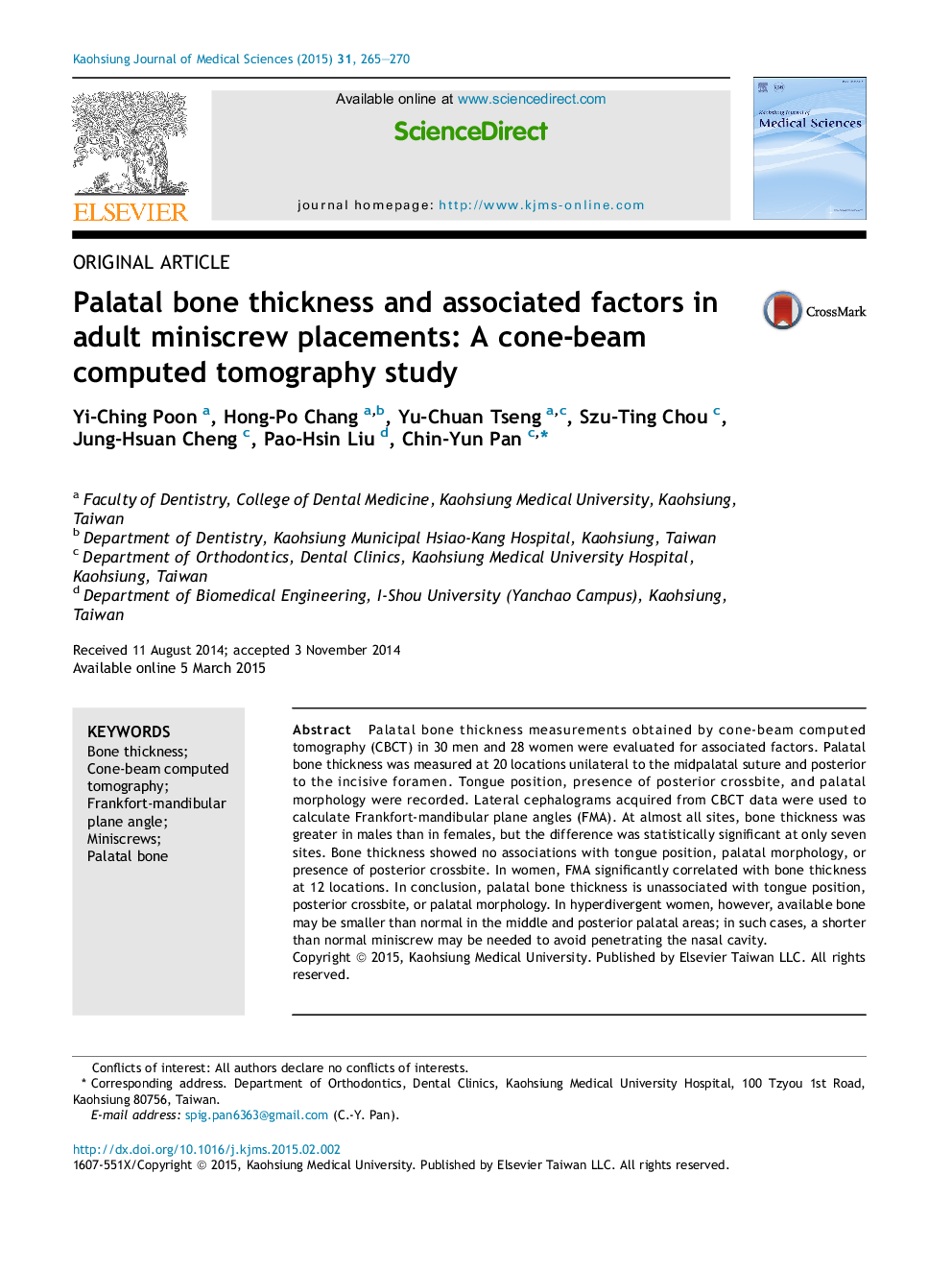| Article ID | Journal | Published Year | Pages | File Type |
|---|---|---|---|---|
| 3485207 | The Kaohsiung Journal of Medical Sciences | 2015 | 6 Pages |
Palatal bone thickness measurements obtained by cone-beam computed tomography (CBCT) in 30 men and 28 women were evaluated for associated factors. Palatal bone thickness was measured at 20 locations unilateral to the midpalatal suture and posterior to the incisive foramen. Tongue position, presence of posterior crossbite, and palatal morphology were recorded. Lateral cephalograms acquired from CBCT data were used to calculate Frankfort-mandibular plane angles (FMA). At almost all sites, bone thickness was greater in males than in females, but the difference was statistically significant at only seven sites. Bone thickness showed no associations with tongue position, palatal morphology, or presence of posterior crossbite. In women, FMA significantly correlated with bone thickness at 12 locations. In conclusion, palatal bone thickness is unassociated with tongue position, posterior crossbite, or palatal morphology. In hyperdivergent women, however, available bone may be smaller than normal in the middle and posterior palatal areas; in such cases, a shorter than normal miniscrew may be needed to avoid penetrating the nasal cavity.
